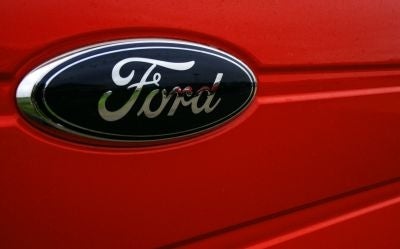Your support helps us to tell the story
From reproductive rights to climate change to Big Tech, The Independent is on the ground when the story is developing. Whether it's investigating the financials of Elon Musk's pro-Trump PAC or producing our latest documentary, 'The A Word', which shines a light on the American women fighting for reproductive rights, we know how important it is to parse out the facts from the messaging.
At such a critical moment in US history, we need reporters on the ground. Your donation allows us to keep sending journalists to speak to both sides of the story.
The Independent is trusted by Americans across the entire political spectrum. And unlike many other quality news outlets, we choose not to lock Americans out of our reporting and analysis with paywalls. We believe quality journalism should be available to everyone, paid for by those who can afford it.
Your support makes all the difference.Ford Motor Co was slow out of the starting gate in Asia but now the number two US automaker is betting big on the region to drive global growth, says its Asia-Pacific chief.
Ford has just announced plans to spend $1 billion to build a second car and engine complex in India as it ramps up production to exploit the country's fast-growing vehicle market, bringing to seven the number of plants it is building in Asia.
"This is the only place in the world where we have new plants under construction," Joe Hinrichs, head of Asia-Pacific and Africa for Ford, told AFP in an interview on a visit to New Delhi.
Rising incomes and rapidly expanding young populations have turned Asia into a battleground for global car manufacturers such as Ford, GM and Toyota, which hope to grow revenues by steering towards the Asia-Pacific region and Africa.
"Today one out of six Ford vehicles are sold in this region and by the end of the decade we expect about a third of Ford vehicles sales to come from here," said Hinrichs. "That's why we're investing."
But he recognises the Detroit firm still has a long way to go to make the region a significant revenue generator. Ford is just a minnow with only three percent of the markets in China and India - the two fastest-growing globally.
Ford began selling its cars in 1996 in India and in China one year later, but it only recently stepped up its game as it emerged from recession and restructuring in the United States.
With first-half net profit of $4.95 billion, "we now have the financial solidity" to attack Asia, Hinrichs said. Since 2006, Ford has invested $5 billion in the Asia-Pacific and Africa region, including the Gujarat plant.
"We just have to stay focused," he said.
India is the sixth largest auto market globally, with two million in annual sales, but industry tracker JD Power and Associates sees it becoming third biggest by 2020, while China holds the top spot with 18.1 million sales last year.
Rivals such as leading US automaker GM, Toyota and Volkswagen still have much bigger brand recognition and higher sales than Ford in the region, while in India, the company faces fierce competition from Japanese-owned Maruti Suzuki.
But Hinrichs believes Ford can make up lost ground.
"You see the potential the Ford brand has in Asia if we can do here what we have done elsewhere," he said. Ford holds 17 percent of the US market and eight percent of the European market.
Deepesh Rathore, India managing director of research firm IHS Automotive, said: "It may be tempting to say Ford may already be late to the party" in Asia.
"But we have the belief that strong sales growth momentum in these markets gives every carmaker ample opportunities to grow," he told AFP.
"Also, customers in these markets are receptive to new brand names."
Ford, which aims to increase global sales by nearly 50 percent by mid-decade to eight million vehicles a year, sees signs of progress.
Last year, in India where the small car is king, it launched the Figo hatchback in what Hinrichs calls a "gamechanger" - tripling Ford sales to 83,887 units for the year. In China, Ford sales last year jumped 40 percent to 582,467 vehicles.
To bolster its product roster, Ford is bringing eight new models to India, including the just-launched Fiesta, and 15 to China by 2015. It is also rapidly adding dealerships to attract buyers.
"How could we get market share when we had only three models in the showroom in India and six in China?" Hinrichs said. "That's all changing."
Car sales in India and China are slowing this year as their governments battle stubborn inflation with interest rate hikes that are crimping purchases. But Hinrichs believes the fundamentals of the two markets are strong, with each country boasting a population of at least a billion.
"You have so many youngsters reaching driving age, more affluence. Of course, the drive won't be in a straight line, but you're definitely going to see big growth - it's the law of big population numbers."
pmc/mtp/je

Join our commenting forum
Join thought-provoking conversations, follow other Independent readers and see their replies
Comments